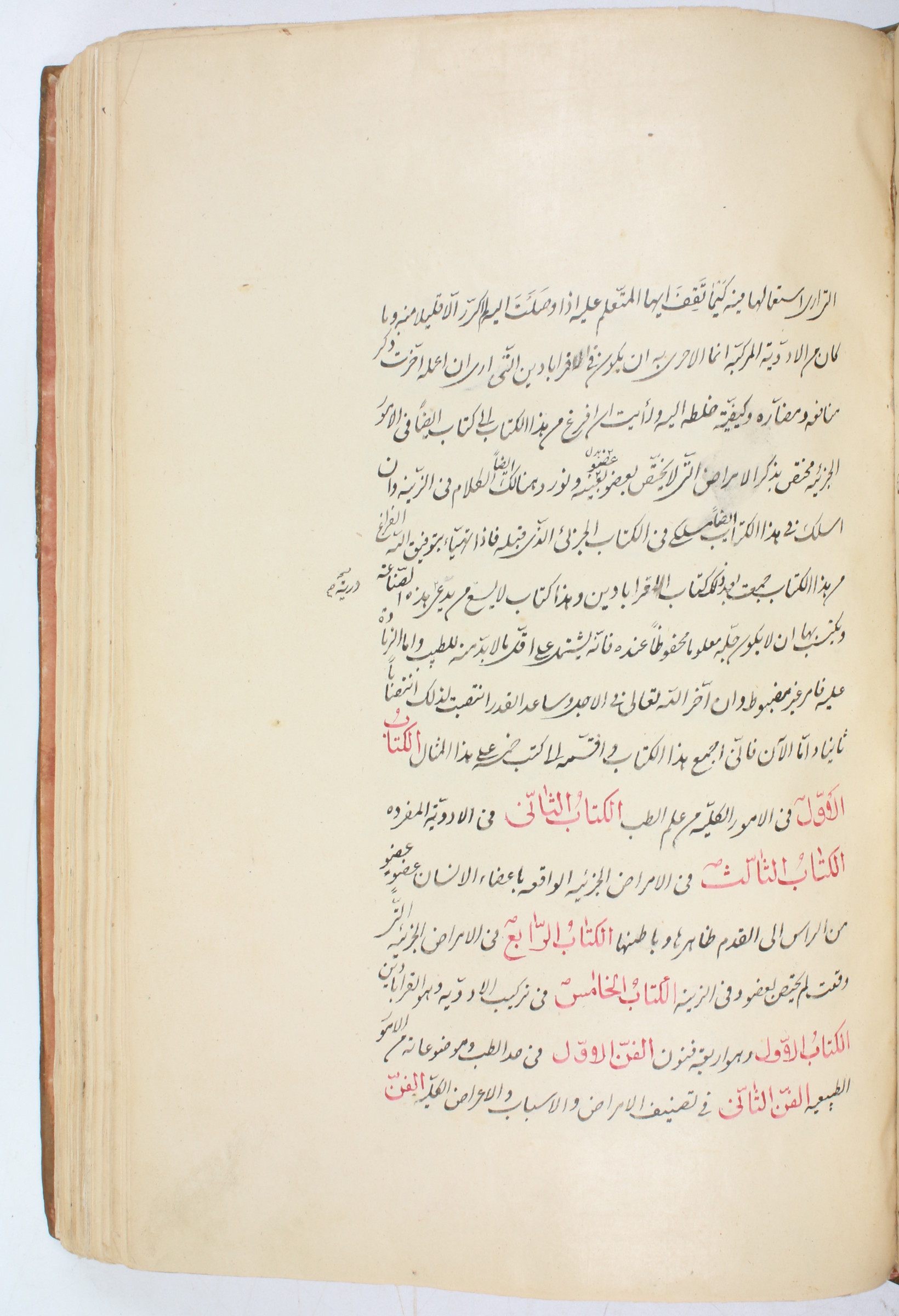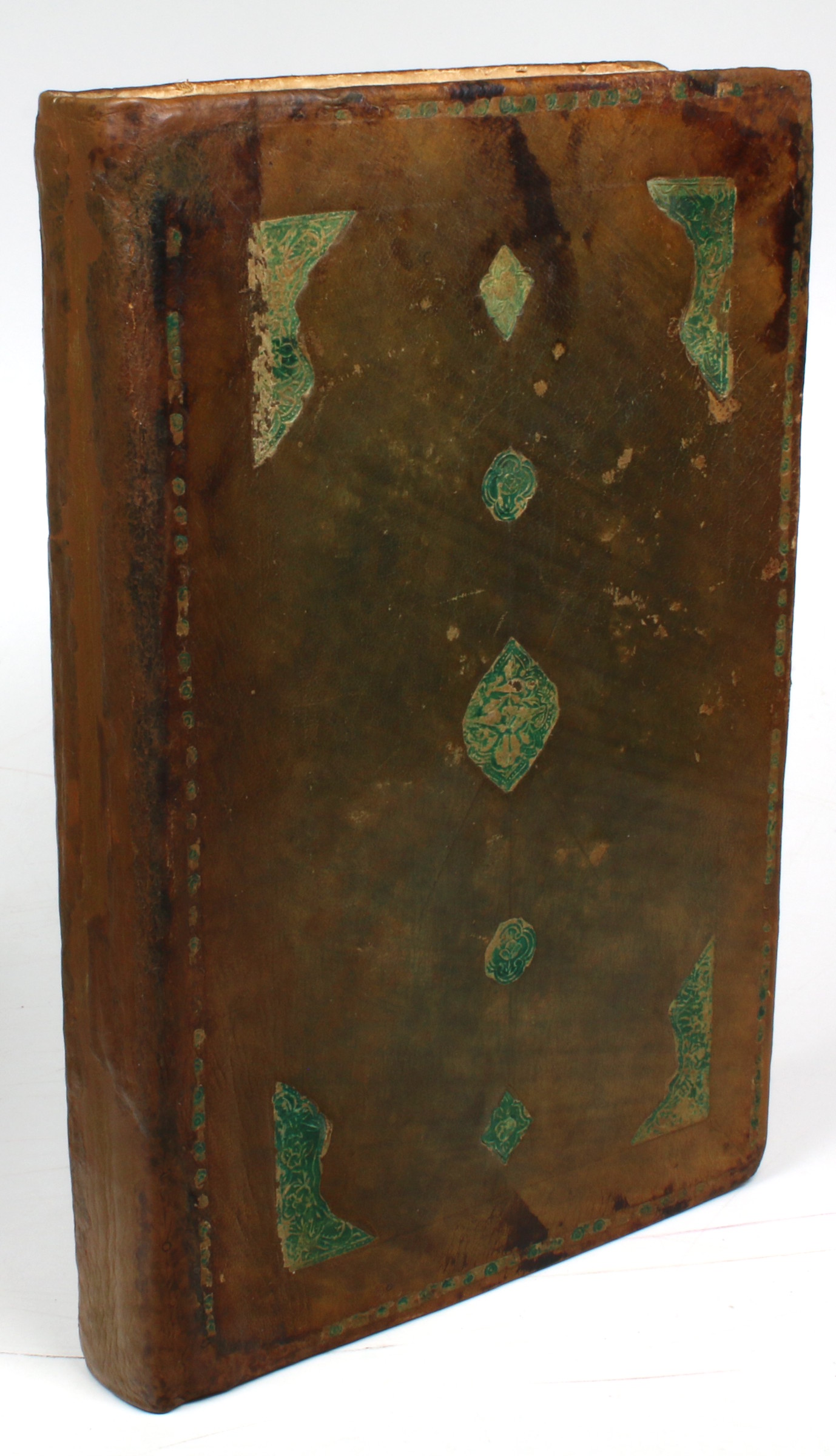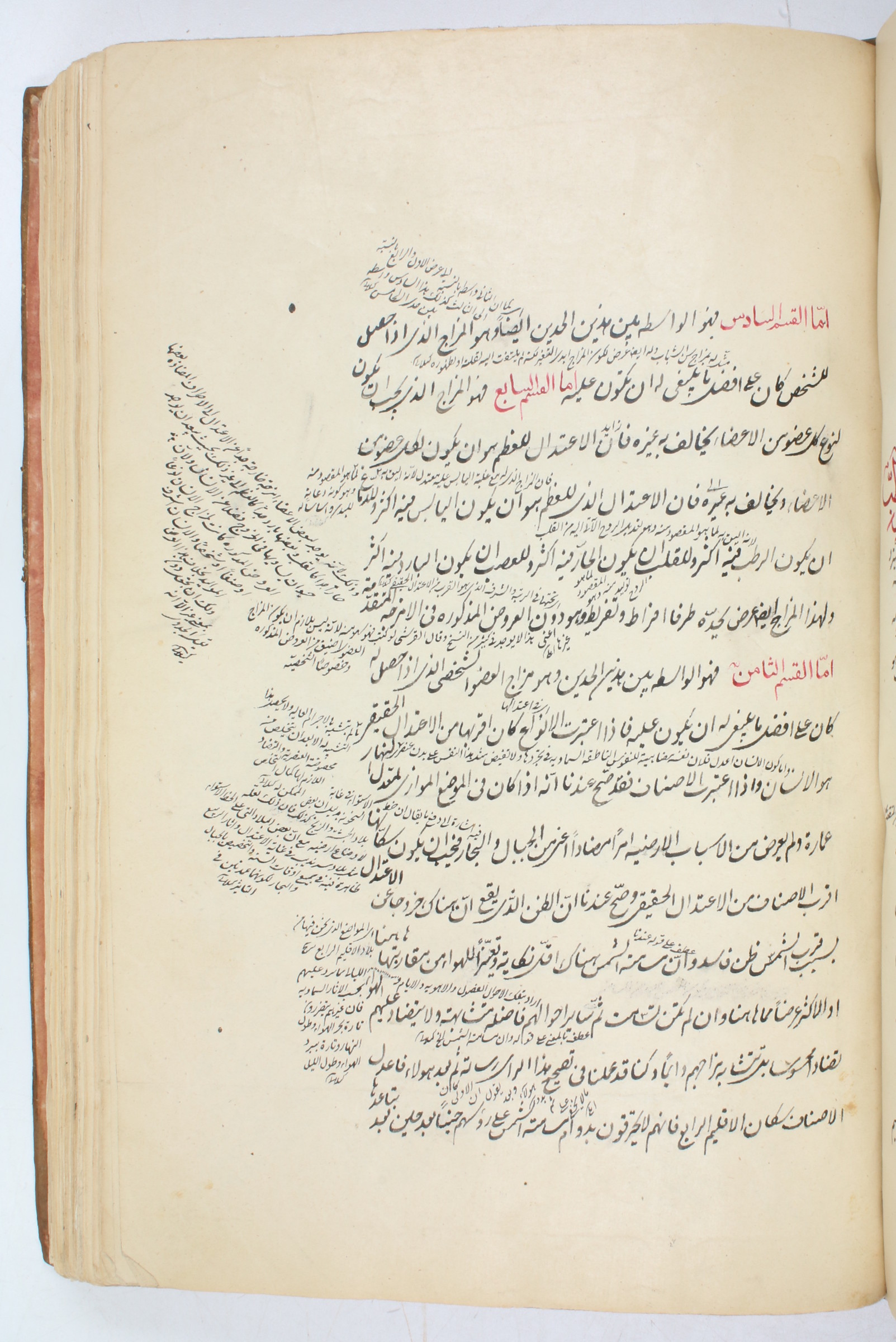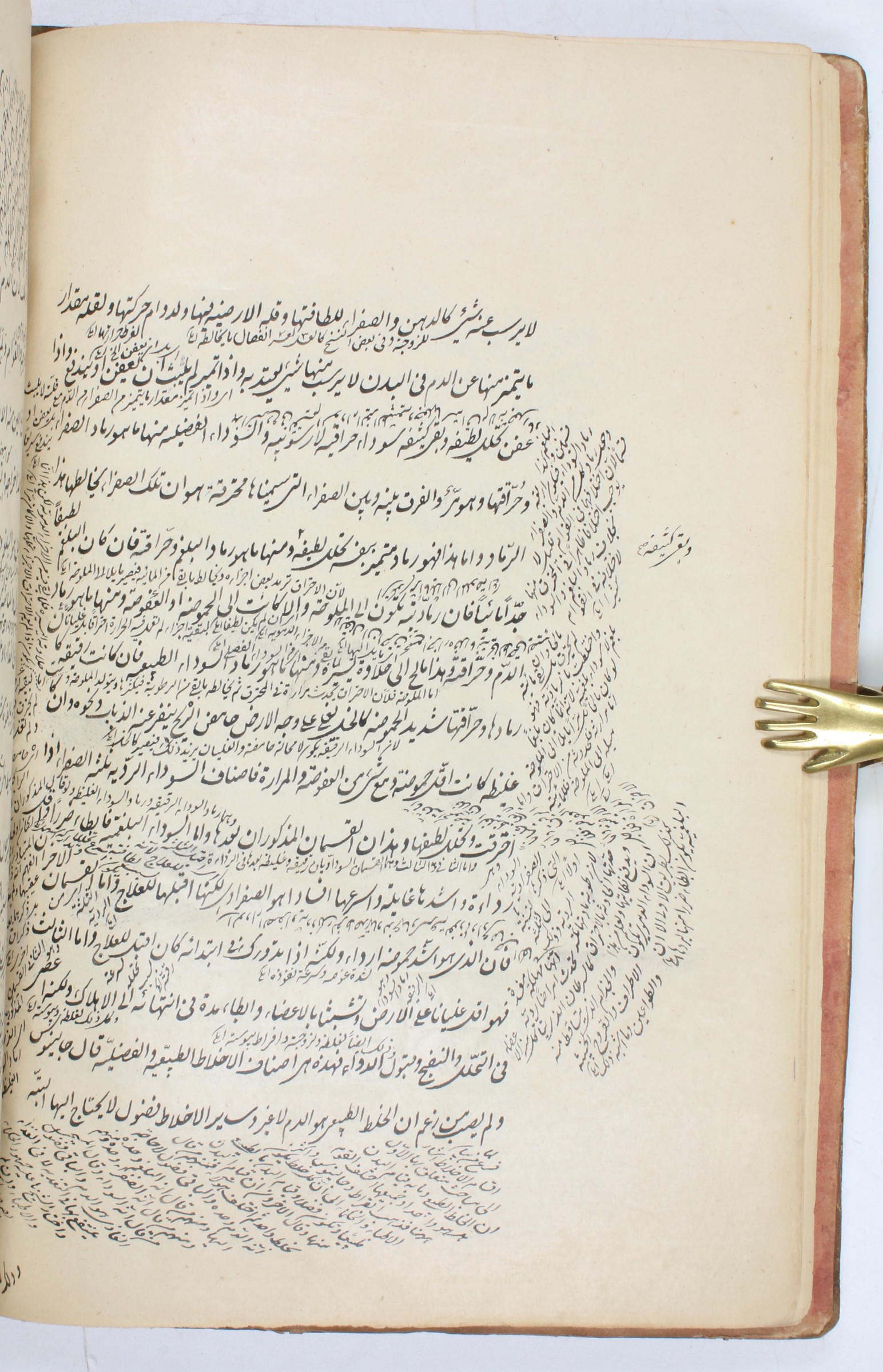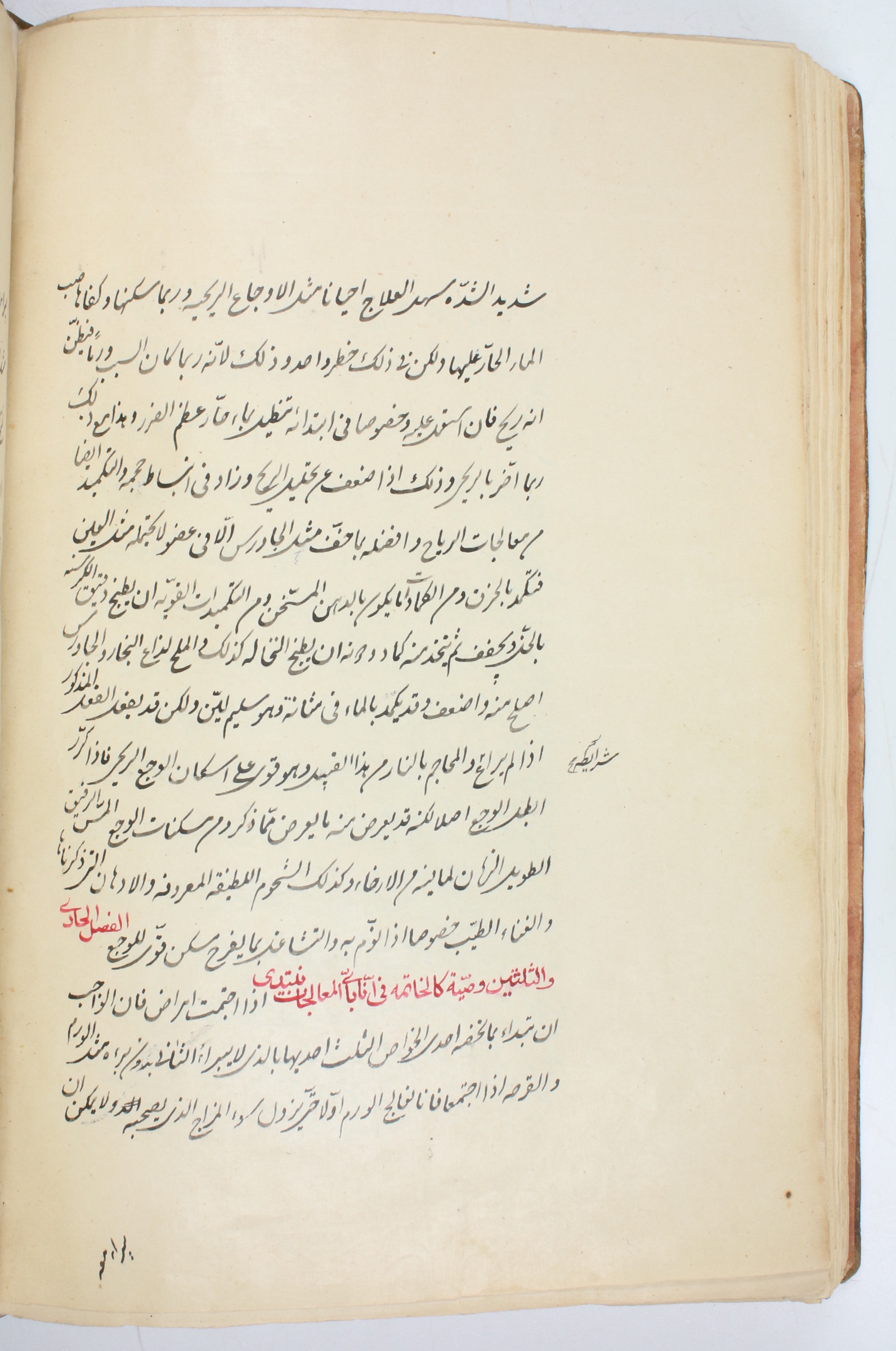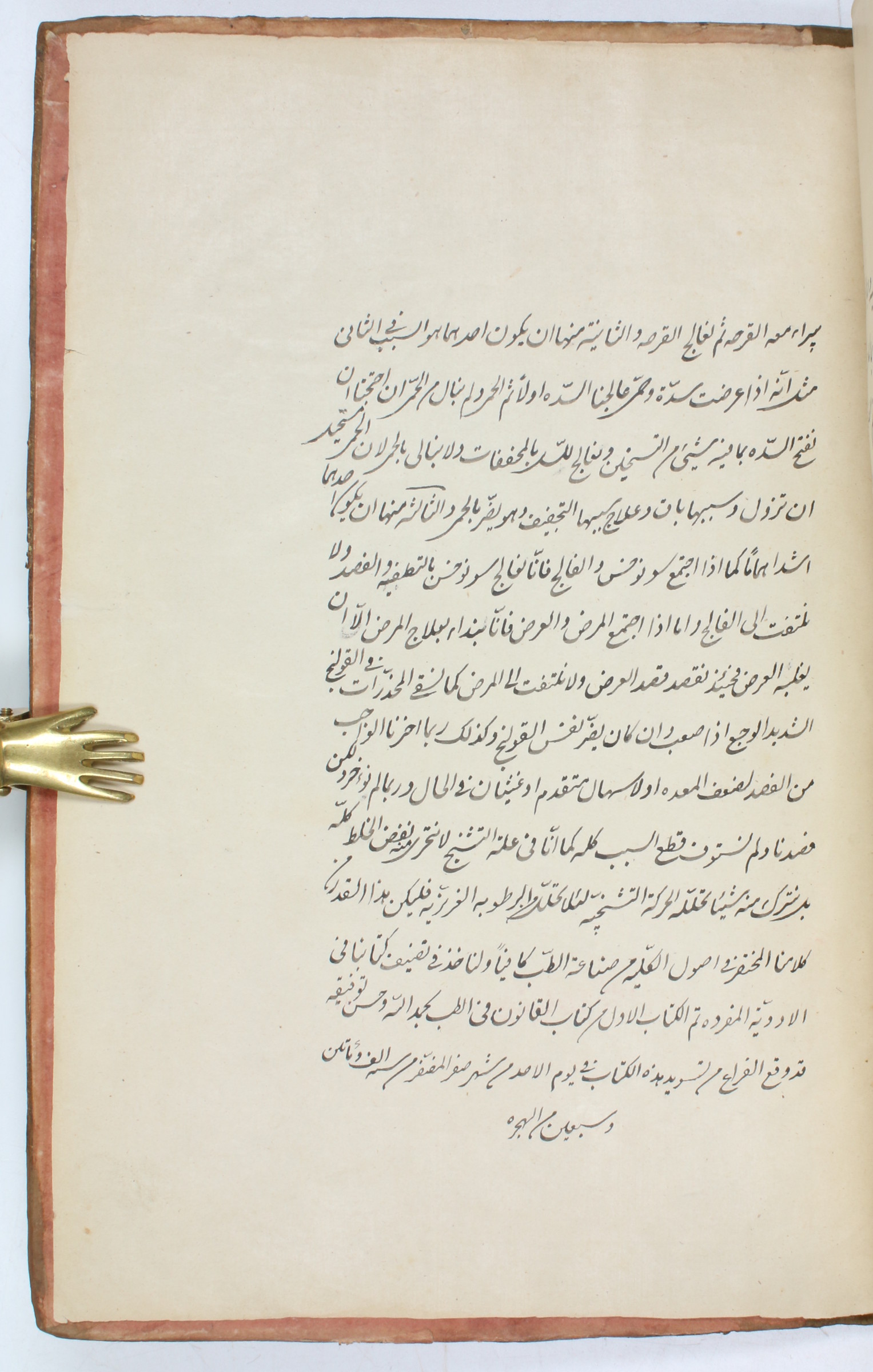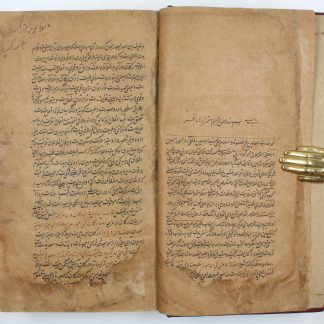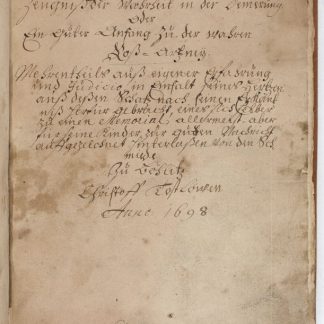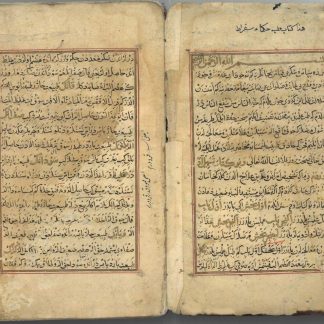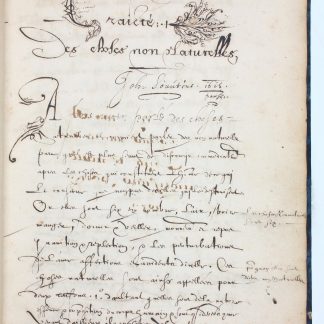The greatest work of Islamic medicine
Al-Kitab al-Awwal min Kitab al-Qanun fi al-Tibb: Al-Kulliyat [Canon of Medicine, Book I].
Large 8vo (190 x 287 mm). Arabic manuscript on polished paper. 233 leaves. Naskh script in black and occasionally red ink, 15 lines with extensive glosses in the margins and several interleaved smaller sheets of commentary (some bound, others loose, including a few diagrammatic illustrations). Contemporary full leather binding with blind-tooled green corner pieces and central medallion.
Mid-19th century manuscript, written in Arabic in the Persian countries, of the first of the five books that form what is perhaps the most important medical text of the Middle Ages.
Ibn Sina's "Kitab al-Qanun fi'l-Tibb" ("Canon of Medicine"), hailed as "the most famous medical text ever written" (Garrison/M. 43), was widely translated throughout the Middle Ages and formed the basis of medical training in the West as late as the mid-17th century. Completed in 1025, the Qanun is divided into five books, of which the first, also called "al-Kulliyat", concerns general medical principles. It often circulated separately from the rest of the encyclopedia. The remaining four parts are devoted to simple drugs, pathology, diseases affecting the body as a whole, and recipes for compound remedies.
Ibn Sina (ca. 980-1037), known in the Western tradition as Avicenna, was physician to the ruling caliphs. The influence of his Qanun can hardly be overestimated. Translated into Latin in the 12th century, it became a standard textbook of Galenic medicine, influencing many generations of physicians.
Well preserved.
GAL I, 457 (597), 82.



